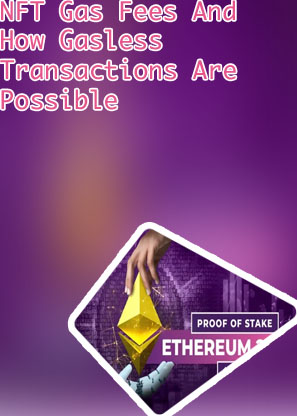

Understanding the factors that influence Ethereum gas prices is essential for crypto investors and traders looking to optimize their transactions. By knowing when gas prices are lowest, users can save money and increase their profitability. In this list, we have compiled three articles that provide insights into the best times to conduct transactions on the Ethereum network to take advantage of lower gas fees.
Gas fees on the Ethereum network can fluctuate widely depending on network congestion and demand. Understanding when gas fees are typically lowest can help users save money when making transactions on the network. The following articles provide insights into the factors that affect gas fees on Ethereum and offer strategies for optimizing transaction costs.
Gas fees have been a persistent issue for users of the Ethereum network, with costs sometimes skyrocketing during times of high network activity. Fortunately, there are several strategies that users can employ to minimize these transaction costs and save money.
One of the most effective ways to save on gas fees is to carefully choose the timing of your transactions. By monitoring the network activity and choosing to transact during periods of lower congestion, users can avoid the high fees that come with busy times. Additionally, users can also consider using layer 2 solutions or alternative blockchains that offer lower transaction costs.
Another tip for reducing gas fees is to optimize your transactions by bundling multiple actions into a single transaction. This can help to reduce the overall cost per action and save money in the long run. Additionally, users can also set a lower gas price when submitting transactions, although this may result in slower confirmation times.
Overall, saving on gas fees is an important consideration for anyone using the Ethereum network, especially for frequent users or those making large transactions. By following these tips and staying informed about network activity, users can minimize their transaction costs and make the most of their Ethereum experience.
Gas fees on the Ethereum network play a crucial role in determining the cost and speed of transactions. For users looking to optimize their transaction costs, it is essential to analyze gas fees and identify the best time to make transactions.
Gas fees are the fees paid by users to miners on the Ethereum network to process transactions. These fees fluctuate depending on network congestion and demand. To minimize gas fees, users should consider making transactions during off-peak hours when network congestion is low. This can help reduce the cost of transactions significantly.
In addition to timing transactions, users can also use gas fee tracking tools to monitor gas prices and predict when fees are likely to be lower. By staying informed about gas fee trends, users can make informed decisions about when to make transactions on the Ethereum network.
Feedback from a resident of Tokyo, Japan:
"I have found that timing my transactions on the Ethereum network has helped me save on gas fees. By making transactions during off-peak hours, I have been able to reduce the cost of my transactions significantly. Gas fee tracking tools have also been useful in helping me identify the best times to make transactions. Overall, analyzing gas fees and timing transactions carefully has been beneficial for optimizing my transaction costs on Ethereum." - Satoshi Tanaka
Gas prices on the Ethereum network have been a hot topic of discussion among cryptocurrency enthusiasts and investors. Understanding the patterns behind these fees can help users optimize their transactions and save on costs. By analyzing historical data and market trends, users can predict when gas prices are likely to be lower and plan their transactions accordingly.
One practical use case for monitoring gas price trends is when trading ERC-20 tokens on decentralized exchanges. By keeping an eye on gas prices, traders can choose the most cost-effective times to make their transactions. For example, by waiting for a period of low gas prices, a trader can save a significant amount of money on transaction fees, increasing their overall profits.
Additionally, understanding gas price trends can also be beneficial for developers building decentralized applications on the Ethereum network. By optimizing their smart contracts to use gas more efficiently during periods of high fees, developers can reduce costs for their users and improve the overall user experience.
In conclusion, staying informed about gas price trends on the Ethereum network can lead to significant cost savings for traders and developers alike. By analyzing patterns and planning transactions strategically, users can take advantage of lower fees and maximize their profits.
Gas usage is a crucial aspect of utilizing the Ethereum blockchain efficiently. Transaction costs can add up quickly, especially during periods of high network congestion. To mitigate these costs and optimize gas usage, it is essential to employ effective strategies that can help minimize expenses while ensuring timely processing of transactions.
Listed below are some key strategies that can help reduce transaction costs on the Ethereum network:
Batch transactions: By bundling multiple transactions into a single batch, users can save on gas costs by paying only once for the combined transactions. This can be particularly beneficial for decentralized applications that require frequent interactions with the blockchain.
Use gas-efficient contracts: Smart contract developers should prioritize writing efficient code that minimizes gas consumption. By optimizing contract logic and reducing unnecessary computations, developers can significantly lower transaction costs for users.
Monitor gas prices: Gas prices on the Ethereum network can fluctuate based on network activity. By monitoring gas prices in real-time and selecting optimal times to submit transactions, users can take advantage of lower fees during periods of lower congestion.
Utilize layer 2 solutions: Layer 2 scaling solutions such as Optimistic Rollups and zkRollups can help offload transactions from the main Ethereum chain, reducing gas costs and increasing throughput.
Employ gas limit optimization:
